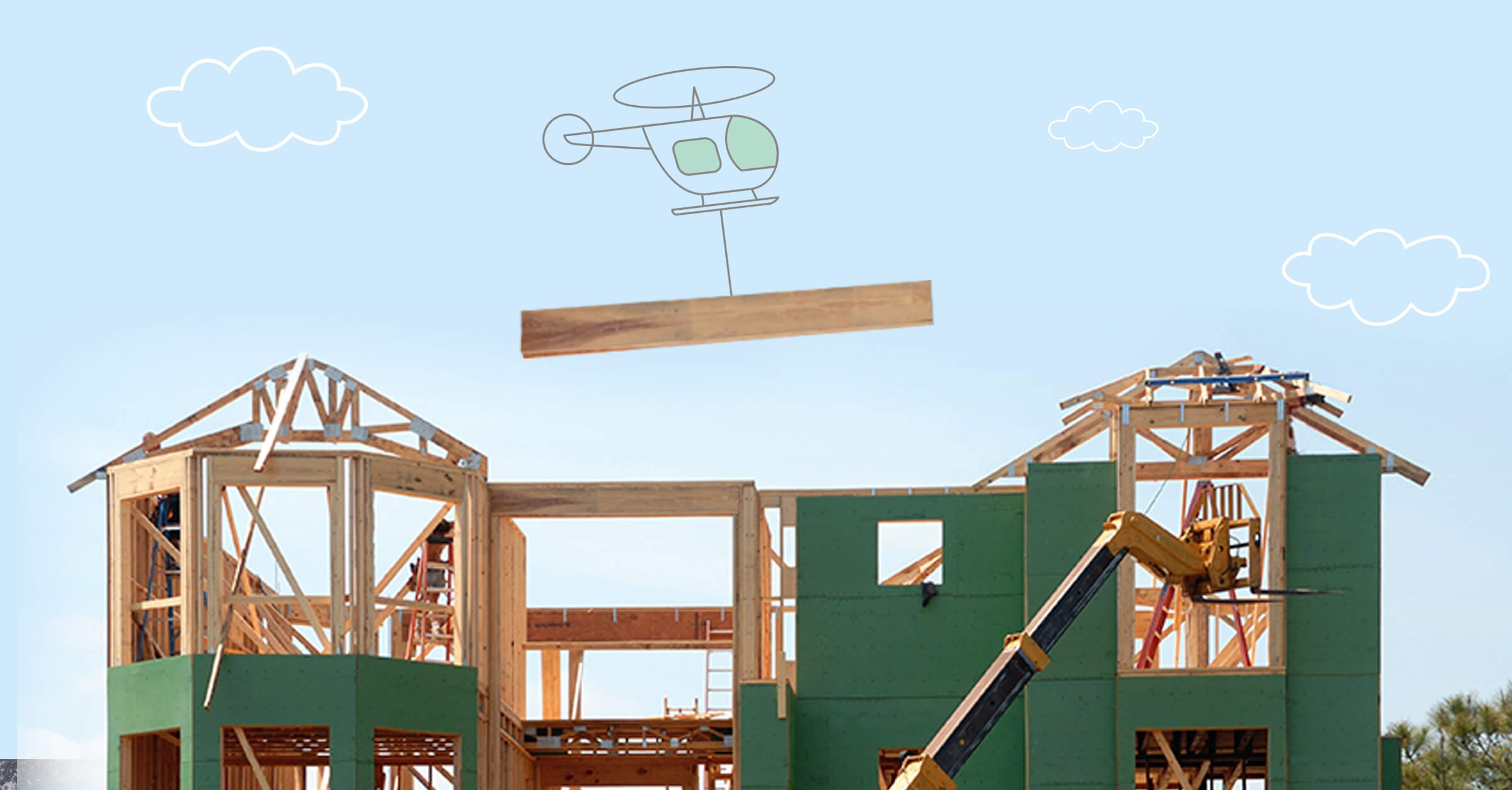Market Value vs Replacement Cost [Real Estate Insights]

If your home were damaged or destroyed tomorrow, your insurance company would step in to help fix or replace it, according to the coverage options and limits you chose. But in some cases, there can be a big discrepancy between a home’s market value vs replacement cost, leaving you at risk of being under-protected.
Here’s a look at how to compare market value and replacement cost insurance coverage, what each offers, and how to decide which one you need.
Key takeaways
- Market value coverage protects you up to the current value of your home or what a buyer would be willing to pay today.
- Depending on where you live, the current housing market conditions, and the details of your loss, there may be a big difference between your home insurance replacement cost value vs market value.
- This means that if your home were destroyed by a fire, storm, or other peril today, it could potentially cost more to rebuild than the home is “worth.”
- Replacement cost coverage helps make owners whole again, even if labor and building materials costs rise and exceed the home’s market value.
- Even with replacement cost value coverage, you’ll still be bound to the total coverage limits you choose for your policy.
What are replacement costs?
An insured item’s replacement cost is how much you (or your insurance company) would pay to repair, rebuild, or replace that item — or even your entire home — if it was damaged, lost, or destroyed. Replacement cost considers everything from purchase costs to replacement materials, energy costs, labor expenses, permits, and applicable fees.
Replacement costs vary widely depending on your chosen insurance policy and the items you opt to insure. Your carrier can help pay the replacement costs for your entire home, certain features (like the roof or a fence), and personal property.
Insurers consider many different factors when estimating the cost of replacing your home and belongings at the time a new policy is purchased. Your home’s replacement cost, for example, takes into account things like
- the value of the land your home sits on
- features of your home
- the cost of demolishing the property in the case of a total loss
A common suggestion for homeowners is the 80% rule, which states that insurance should cover at least 80% of a property’s replacement cost. You and your insurance company will calculate this value when buying and/or renewing a policy for your home. Over time, this estimate can become outdated, and an inaccurate assessment will leave you underinsured, so be sure to revisit these numbers frequently.
It’s also important to note that a homeowners insurance policy may not cover all of your rebuilding expenses, even if your property damage costs don’t exceed your coverage limits. That’s because some policies only offer market value coverage, taking into account things like age and depreciation. This differs from replacement cost coverage and may offer less toward rebuilding or repairing your home after a covered loss.
What are the benefits and risks of replacement cost coverage?
Replacement cost value (RCV) coverage gives homeowners peace of mind that if their homes were damaged or destroyed, their policy would provide enough cash to make them whole.
A benefit to replacement cost (vs market value) coverage is that it will replace your dwelling and any personal belongings at full replacement value. Since RCV doesn’t factor in depreciation, you aren’t forced to cover a portion of the replacement cost out of your own pocket.
Of course, all coverage options have drawbacks, too. One of the biggest downsides of replacement cost coverage is the price. Because RCV coverage offers protection without subtracting depreciation, it typically costs more than market value insurance policies.
It’s also important to note that even replacement cost coverage still has a limit. When you purchase a homeowners insurance policy, you decide how much total coverage you want for your home. Rebuilding your property can still cost more than that in the end, leaving you in a tough spot if you didn’t buy enough coverage.
What is market value?
The market value of your home, personal belongings, or other structures is what those items are worth today in their current condition. Market value in insurance takes into account the age, condition, and wear of the insured item immediately prior to being damaged or destroyed and calculates how much a buyer would have reasonably paid for the asset.
What are the risks of insuring at market value?
Insuring your home or other items at market value can be great when prices rise, like during the housing market boom of the last few years. If market values drop, this insurance coverage might not be enough to adequately protect your assets.
How do I determine the fair market value of my home?
The best way to determine your home's current and fair market value is to combine comps and a professional appraisal. This information is imperative when planning to sell your home and can also be beneficial when choosing your homeowners insurance coverage.
Agents and brokers often estimate a home’s market value by pulling the prices of similar and comparable homes (called comps) in the local area that have sold within the past 30-90 days. A professional appraisal, which also utilizes comps, is the best way to determine your home's fair market value and inspect your property's condition and features. The market value of a home also depends on several external factors, such as how close it is to highly rated schools, shopping centers, and public transit.
Think of it this way: Market value is based on supply and demand and represents what buyers and sellers believe a home is worth at a given time. Replacement cost, on the other hand, reflects the dollar amount necessary to reconstruct a comparable home in the current market.
Can replacement cost be higher than market value?
In some cases, the replacement cost of your home can be higher than its insurance market value. This is especially true if a large number of homes are damaged at one time.
For example, say you own a home with a market value of around $450,000. A wildfire spreads through your area, and your home burns down, along with 15 others. Since so many homes need to be demolished and rebuilt, you find that materials costs and labor expenses have risen substantially. The best estimates are that your home will now cost $525,000 to rebuild from the ground up.
In this case, replacing your home is more expensive than the property's market value before it was destroyed. If you only had coverage for your home's fair market value (vs replacement cost), you could cover a large portion of the costs.
Real-world scenarios: When completely rebuilding a home is necessary
The idea of an unexpected disaster totalling your home can be unfathomable, but it happens daily to homeowners nationwide. Fires, lightning, windstorms, tornadoes, falling trees, and other natural disasters… There are so many perils that could potentially destroy your dwelling.
On top of the emotional distress this would cause, it’s important to note that rebuilding and replacing your home following one of these disasters could take much longer than you think. For example, following the wildfires in Northern California, rebuilding homes regularly took between 12 and 24 months to complete.
Materials and labor costs can even continue to rise from the time your home is destroyed until it’s fully rebuilt. When so many homes are being rebuilt simultaneously, the rise in costs can be astronomical, especially if you have a home with high-end fixtures, custom features, or discontinued materials.
How to insure your home at its replacement cost.
Rather than leave your property (and your pocket) to change, buying homeowners insurance with replacement cost coverage is in most people's best interest. This type of coverage ensures that if a covered peril totally destroys your property, it will be rebuilt, and you'll be made whole — even if that costs more than you originally expected.
When buying replacement cost coverage, your carrier will consider certain factors to help calculate the cost of rebuilding your home. They may ask questions about your home, its age, and square footage. You may also be asked about certain features like your ceiling height, flooring, and the quality of your finishings.
Insurance companies will use that information to estimate your local rebuilding costs. You can then set your policy’s dwelling coverage (Coverage A) limits accordingly. Want to cover your back even more? Some carriers will also offer extended replacement cost coverage to further protect you from unexpected expenses.
Still have questions?
Understanding homeowners insurance replacement cost vs market value can be a bit confusing. Here are a few of the most frequently asked questions.
When Is replacement cost lower than market value?
Sometimes, the market value of your home — or how much buyers would be willing to spend for your property if you put it up for sale — can be higher than what it would cost to rebuild your home from scratch following a disaster. This happens when market values rise, increasing the appraised value of your home.
How do replacement costs and actual cash value differ?
Replacement cost coverage covers the cost of replacing (including rebuilding) your home and other belongings after a covered loss. Actual cash value is the value of your home at the time of the loss, accounting for depreciation factors like age, condition, and use.
What is full replacement value?
Full replacement value coverage will pay to replace, repair, or rebuild your dwelling and other covered items following a covered loss at today's prices. This coverage doesn't account for depreciation due to age, condition, or wear and tear but instead looks at how much it will actually cost to make you whole again.
Do insurance companies pay fair market value?
Yes, depending on the type of homeowners insurance coverage you buy and the details of your covered loss, your carrier may pay up to fair market value for your property. If you have replacement value coverage, your insurance company will pay to make you whole (up to your policy limits) even if the replacement cost exceeds fair market value.
How do insurance companies determine replacement value?
Your home’s replacement value can fluctuate over time, depending on changing materials and labor costs. When you buy coverage, insurance companies look at the appraised value and the details of your home (its age, size, condition, features, finishes, etc.), then apply certain formulas to calculate their expected replacement cost in the case of a total loss.



